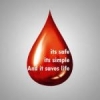Reputation Activity
-
 LABLAD42 reacted to Malcolm Needs in To LISS or NOT to LISSI'm none too sure that I would count LISS as an enhancement medium, but I would definitely count PEG, albumin and enzymes as enhancement media.
LABLAD42 reacted to Malcolm Needs in To LISS or NOT to LISSI'm none too sure that I would count LISS as an enhancement medium, but I would definitely count PEG, albumin and enzymes as enhancement media.
We use pre-warmed LISS IAT almost every day in the Reference Laboratory, although we use column agglutination technology as the first "line of attack".
When I started training at the Blood Group Reference Laboratory in circa 1973, pre-warmed saline IAT (with an hour and a half incubation) was the norm. The 90 minutes incubation was largely because that was how long Rob Race and Ruth Sanger took for lunch in the MRC Blood Group Unit, and the BGRL adopted this technique!!!!!!!!!!!!!
-
 LABLAD42 got a reaction from DebBuch in Medical Director Evaluation of Transfusion ReactionsI think more than anything the inspectors are looking at notification documentation and preliminary notification.
LABLAD42 got a reaction from DebBuch in Medical Director Evaluation of Transfusion ReactionsI think more than anything the inspectors are looking at notification documentation and preliminary notification.
I include a form in each Tx rx workup and they never have given me a hard time.
My former boss drafted the form after a citation that was corrected .
I use it since and had only compliments since.
-
 August 19, 1994
August 19, 1994
MEASURING HEMOGLOBIN CONCENTRATION AFTER TRANSFUSION.
AS Brett reviewing Wiesen AR et al. Ann Intern Med 1994 Aug 15.
At what point after blood transfusion is it possible to get a reliable measure of the increase in hemoglobin concentration? These researchers tackled this question by measuring hemoglobin concentrations in 39 patients 15 minutes, 1 hour, 2 hours, and 24 hours after the patients received two units of packed red cells. None of the patients had active or recent bleeding.
The mean baseline hemoglobin level was 7.4 g/dl. Fifteen minutes after the transfusion, the mean hemoglobin concentration was 9.4 g/dl, and remained at this level throughout the first 24 hours. Various clinical variables such as body size, recent diuretic use, or duration of transfusion did not influence these results.
AS Brett
Comment
Determination of hemoglobin concentration 15 minutes after transfusion of packed cells accurately reflects the steady-state concentration for the next 24 hours. When a measure of the effect of a transfusion is needed, a single hemoglobin determination shortly afterward is sufficient.
Citation(s):
Wiesen AR et al. Equilibration of hemoglobin concentration after transfusion in medical inpatients not actively bleeding. Ann Intern Med 1994 Aug 15 121 278 280
PubMed abstract (Free)Web of Science
- See more at: http://www.jwatch.org/jw199408190000005/1994/08/19/measuring-hemoglobin-concentration-after#sthash.YLIdWCz2.dpuf
-
 LABLAD42 got a reaction from David Saikin in How long?August 19, 1994
LABLAD42 got a reaction from David Saikin in How long?August 19, 1994
MEASURING HEMOGLOBIN CONCENTRATION AFTER TRANSFUSION.
AS Brett reviewing Wiesen AR et al. Ann Intern Med 1994 Aug 15.
At what point after blood transfusion is it possible to get a reliable measure of the increase in hemoglobin concentration? These researchers tackled this question by measuring hemoglobin concentrations in 39 patients 15 minutes, 1 hour, 2 hours, and 24 hours after the patients received two units of packed red cells. None of the patients had active or recent bleeding.
The mean baseline hemoglobin level was 7.4 g/dl. Fifteen minutes after the transfusion, the mean hemoglobin concentration was 9.4 g/dl, and remained at this level throughout the first 24 hours. Various clinical variables such as body size, recent diuretic use, or duration of transfusion did not influence these results.
AS Brett
Comment
Determination of hemoglobin concentration 15 minutes after transfusion of packed cells accurately reflects the steady-state concentration for the next 24 hours. When a measure of the effect of a transfusion is needed, a single hemoglobin determination shortly afterward is sufficient.
Citation(s):
Wiesen AR et al. Equilibration of hemoglobin concentration after transfusion in medical inpatients not actively bleeding. Ann Intern Med 1994 Aug 15 121 278 280
PubMed abstract (Free)Web of Science
- See more at: http://www.jwatch.org/jw199408190000005/1994/08/19/measuring-hemoglobin-concentration-after#sthash.YLIdWCz2.dpuf
-
 LABLAD42 reacted to Malcolm Needs in E Crossmatch and Second ABOYou will have to excuse me if I am a bit cynical about all this.
LABLAD42 reacted to Malcolm Needs in E Crossmatch and Second ABOYou will have to excuse me if I am a bit cynical about all this.
According to all the rules/Laws/whatever you want to call them, if you perform a serological cross-match, you only need one sample. So, if the sample comes from the wrong patient, and the patient dies from an acute haemolytic transfusion reaction, but a serological cross-match was performed - that's okay.
If you have more than one sample from the wrong patient, you can perform electronic issue - the patient can still die - but that's also okay.
A very good freind of mine told me a story (my friend, for whom I have immense respect, and the hospital involved, will remain nameless). A sample was taken from a patient, and the sample was grouped as A+. For some reason, goodness knows why (fate?) the hospital concerned contacted another hospital where the patient had been previously, and they had grouped the patient as O+. So, my friend's hospital asked for a second sample from the patient. The second sample grouped as A+.
My friend asked for a third sample. This also grouped as A+. He/she was still not happy, and so went up to the whilst a fourth sample was taken. This one grouped as O+.
It turned out that the patient really was O+. The phlebotomist had taken blood from the wrong patient the first time, but on the second and third time (by then having "recognised" the patient) did not do the full checks, and just took the blood.
So, if the Laboratory had not been suspicious in the first place, a group O+ patient would have been given group A+ blood by electronic issue, and would probably have had a fatal acute haemolytic transfusion reaction, however many samples had been tested.
This business of more than one sample for electronic issue is just smoke and mirrors, and does not necessarily give any extra safety (and we all know of stories where the two samples were taken at the same time, but labelled and sent to the Blood Bank at different times).
I'm sorry, but these rules/Laws are complete rubbish. Steve is absolutely right, when he says that the key is a robust phlebotomy system.
-
 LABLAD42 reacted to David Saikin in E Crossmatch and Second ABOA forward type should suffice. If you have a historical type that also suffices as one of the two.
LABLAD42 reacted to David Saikin in E Crossmatch and Second ABOA forward type should suffice. If you have a historical type that also suffices as one of the two.
-
 LABLAD42 got a reaction from Desoki in Saline Bottles - how do you label?I have a log with Saline lot# ,Lot# of PBS,date opened(in use) ,expiratiraon(30days),visualcheck ,PH in range,High and low of Control buffer,Tech Intials,
LABLAD42 got a reaction from Desoki in Saline Bottles - how do you label?I have a log with Saline lot# ,Lot# of PBS,date opened(in use) ,expiratiraon(30days),visualcheck ,PH in range,High and low of Control buffer,Tech Intials,



